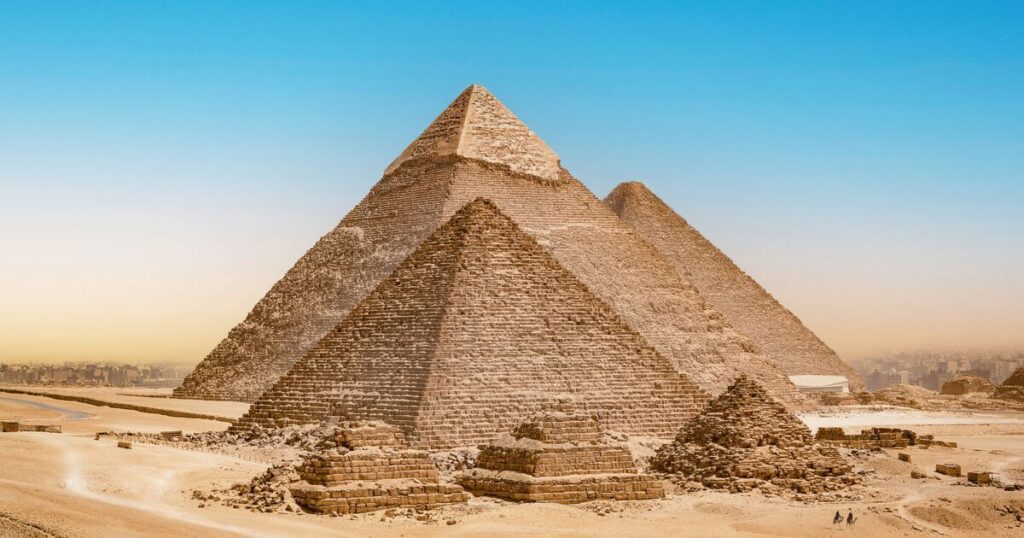Scientists believe they’ve found the remains of a hidden entrance to an ancient pyramid in Egypt about 4,500 years after it was built, based on a mysterious ‘void.’
The supposed hidden entrance is believed to have led to the Pyramid of Menkaure, which is the smallest of the three main pyramids that comprise the famous Giza complex.
It was constructed around 2510 BC and is almost a whopping 200 feet tall. Historians believe the structure was built to host the tomb of King Menkaure, the Fourth Dynasty king. There is also a mystery surrounding the whereabouts of his sarcophagus.
With the use of high-tech scanning equipment, researchers from Egypt and Germany were able to peek beyond the structure’s granite bricks.
The scientists reportedly discovered two hidden air-filled irregularities, which may suggest the pyramid possesses a hidden entrance never found using normal research methods.
The finding is huge, according to Christian Grosse who is a professor of non-destructive testing at the Technical University of Munich. It’s “an important finding in Giza.”
“The testing methodology we developed allows very precise conclusions to be drawn about the nature of the pyramid’s interior,” he said.
“The hypothesis of another entrance is very plausible, and our results take us a big step closer to confirming it.”
The main entrance of the Menkaure is located on the northern side; experts believe the possible secret one is on the eastern side, facing the River Nile.
It’s said to be a rectangular area, measuring about 13ft by 19ft, located on the eastern side close to the ground.
Adding more evidence to the scientists’ theory, the granite blocks found in the area appear to be “unusually smooth” as if someone staunchly polished them millennia ago.
Similarly, smooth stones have been found at the main entrance as well, suggesting the existence of a second one.

